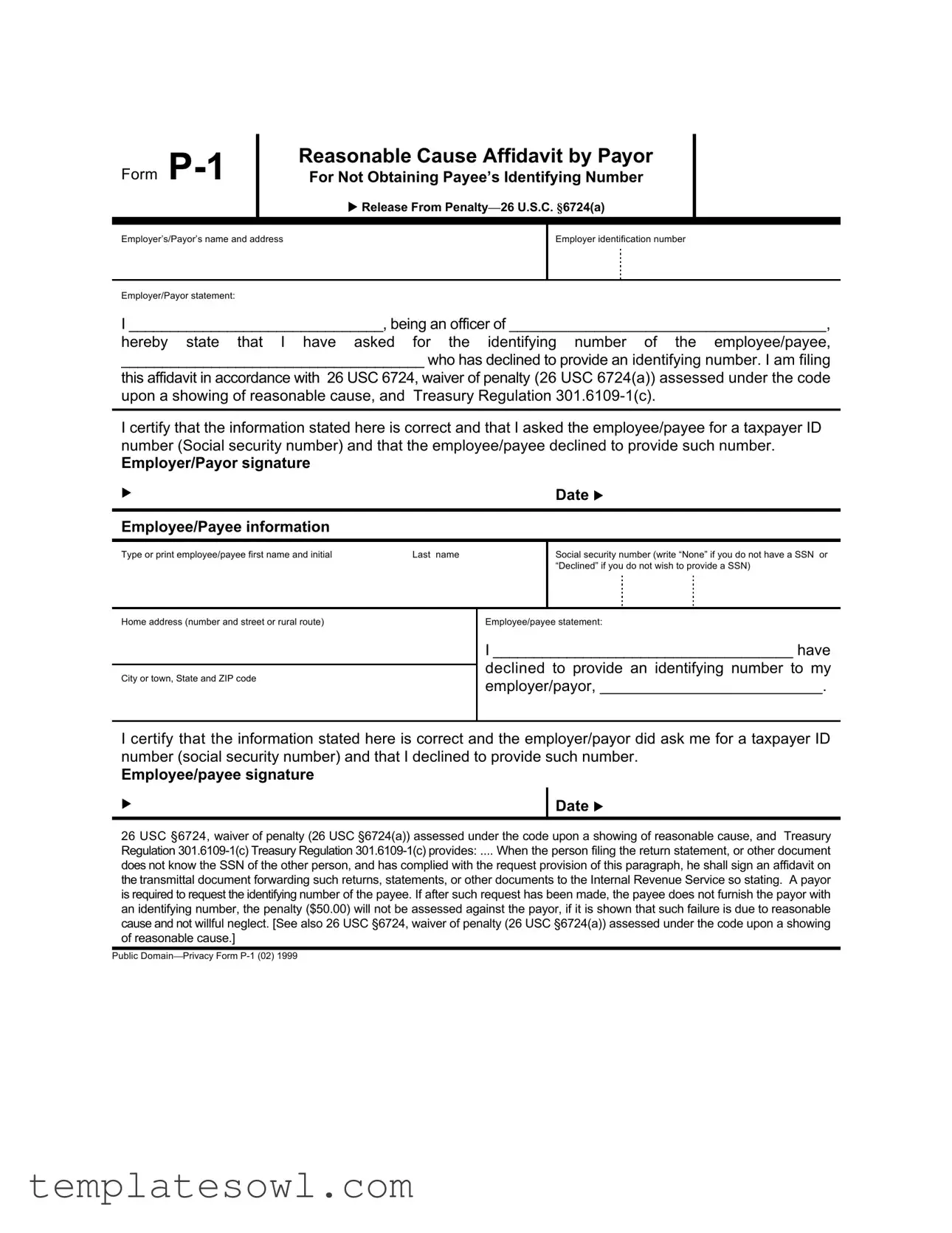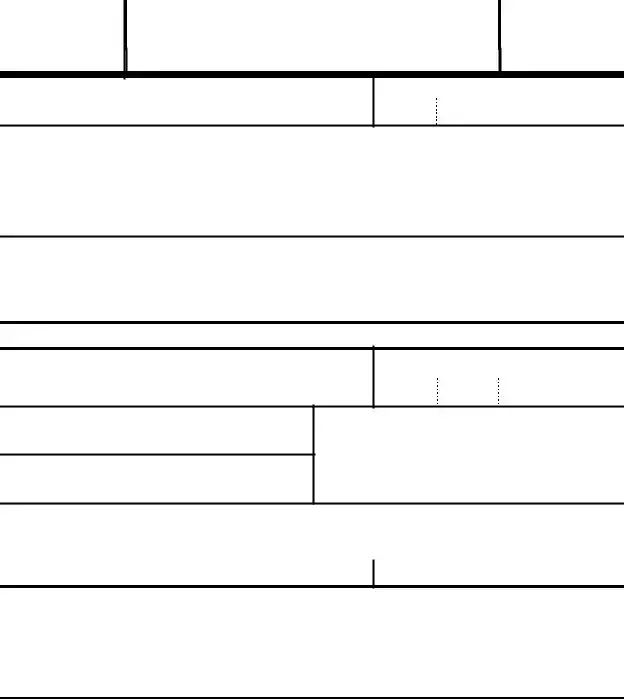Reasonable Cause Affidavit by Payor
For Not Obtaining Payee’s Identifying Number
uRelease From Penalty—26 U.S.C. §6724(a)
Employer’s/Payor’s name and address
Employer identification number
Employer/Payor statement:
I _______________________________, being an officer of _____________________________________,
hereby state that I have asked for the identifying number of the employee/payee,
_____________________________________ who has declined to provide an identifying number. I am filing
this affidavit in accordance with 26 USC 6724, waiver of penalty (26 USC 6724(a)) assessed under the code upon a showing of reasonable cause, and Treasury Regulation 301.6109-1(c).
I certify that the information stated here is correct and that I asked the employee/payee for a taxpayer ID number (Social security number) and that the employee/payee declined to provide such number.
Employer/Payor signature
Employee/Payee information
Type or print employee/payee first name and initial |
Last name |
Social security number (write “None” if you do not have a SSN or “Declined” if you do not wish to provide a SSN)
Home address (number and street or rural route)
City or town, State and ZIP code
Employee/payee statement:
I ____________________________________ have
declined to provide an identifying number to my employer/payor, __________________________.
I certify that the information stated here is correct and the employer/payor did ask me for a taxpayer ID number (social security number) and that I declined to provide such number.
Employee/payee signature
26 USC §6724, waiver of penalty (26 USC §6724(a)) assessed under the code upon a showing of reasonable cause, and Treasury Regulation 301.6109-1(c) Treasury Regulation 301.6109-1(c) provides: .... When the person filing the return statement, or other document
does not know the SSN of the other person, and has complied with the request provision of this paragraph, he shall sign an affidavit on the transmittal document forwarding such returns, statements, or other documents to the Internal Revenue Service so stating. A payor is required to request the identifying number of the payee. If after such request has been made, the payee does not furnish the payor with an identifying number, the penalty ($50.00) will not be assessed against the payor, if it is shown that such failure is due to reasonable cause and not willful neglect. [See also 26 USC §6724, waiver of penalty (26 USC §6724(a)) assessed under the code upon a showing of reasonable cause.]
Public Domain—Privacy Form P-1 (02) 1999

